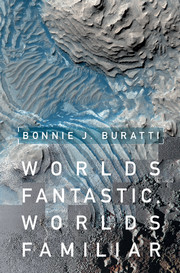Book contents
- Frontmatter
- Dedication
- Contents
- Acknowledgments
- Introduction
- 1 Mercury: The Hottest Little Place
- 2 Venus: An Even Hotter Place
- 3 Mars: The Abode of Life?
- 4 Asteroids and Comets: Sweat the Small Stuff
- 5 Galileo's Treasures: Worlds of Fire and Ice
- 6 Enceladus: An Active Iceball in Space
- 7 Titan: An Earth in Deep Freeze?
- 8 Iapetus and its Friends: The Weirdest “Planets” in the Solar System
- 9 Pluto: The First View of the “Third Zone”
- 10 Earths Above: The Search for Exoplanets and Life in the Universe
- Epilogue
- Glossary
- Index
- Plate section
1 - Mercury: The Hottest Little Place
Published online by Cambridge University Press: 24 March 2017
- Frontmatter
- Dedication
- Contents
- Acknowledgments
- Introduction
- 1 Mercury: The Hottest Little Place
- 2 Venus: An Even Hotter Place
- 3 Mars: The Abode of Life?
- 4 Asteroids and Comets: Sweat the Small Stuff
- 5 Galileo's Treasures: Worlds of Fire and Ice
- 6 Enceladus: An Active Iceball in Space
- 7 Titan: An Earth in Deep Freeze?
- 8 Iapetus and its Friends: The Weirdest “Planets” in the Solar System
- 9 Pluto: The First View of the “Third Zone”
- 10 Earths Above: The Search for Exoplanets and Life in the Universe
- Epilogue
- Glossary
- Index
- Plate section
Summary
To the casual skywatcher Mercury appears near the horizon just after sunset as a faint orange star bathed in the fading glow of the western sky. To the more dedicated observer, the planet also appears right before sunrise in the eastern sky. The ancients had two names for its dawn and dusk appearances: Apollo in the morning, to signify the appearance of the Sun, and Hermes in the evening, to acknowledge the Greek messenger god. The speed of Mercury's motion in its orbit – and as seen from the Earth – is faster than the other five planets easily visible to the naked eye. By the fourth century BCE, during the golden age of Greek experimental science, astronomers noticed that this faint planet appeared in the same position relative to the Sun at both dawn and dusk, and they realized the two apparitions were the same body. The Romans named the planet Mercury after their own swift messenger god. In Nordic mythology, Mercury was associated with Odin, or Wodin, from which Wednesday (Mercredi in French with similar renditions in the Romance languages) is derived.
Many astronomers have never seen Mercury, and the first sighting of this elusive, “mercurial” planet is always memorable. I still remember the night over a half-century ago when I stood alone in the middle of a corn field near my parents’ house in Bethlehem, Pennsylvania and compared the great night sky to a tiny map I had cut out of the Bethlehem Globe Times. The Sun had shed its last ray, and I felt so small as I stood where the soft cusp of the field gave way to the harsh vastness of space. But I was reassured when I saw the little planet, blinking on and off, unmistakably where it should be.
Little experimental triumphs such as this one, when the smallness of our world and our concerns are dwarfed by the immensity and predictability of the stars and planets, were what drew me to the study of the cosmos. I didn't see the planet again with my own eyes until the mid-1990, when I was a fully-fledged astronomer observing on the 200-inch Hale telescope at Palomar Mountain. My colleague Phil Nicholson of Cornell University and I went out onto the catwalk circling the dome to inspect the weather and observing conditions.
- Type
- Chapter
- Information
- Worlds Fantastic, Worlds FamiliarA Guided Tour of the Solar System, pp. 6 - 25Publisher: Cambridge University PressPrint publication year: 2017



